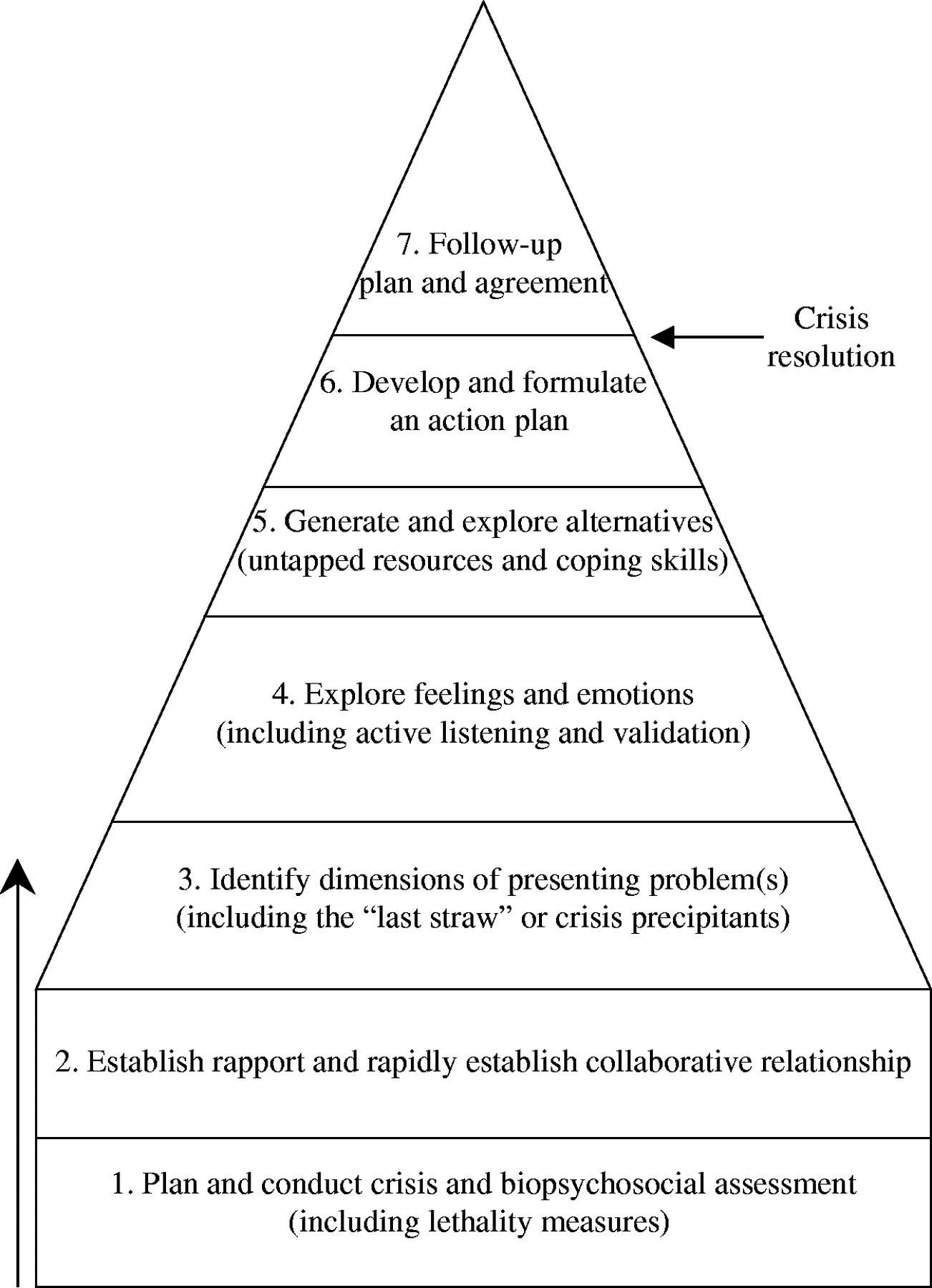
Crisis intervention
Crisis intervention refers to the methods used to offer immediate, short-term help to individuals who experience an event that produces emotional, mental, physical, and behavioral distress or problems. A crisis can refer to any situation in which the individual perceives a sudden loss of his or her ability to use effective problem-solving and coping skills. A number of events or circumstances can be considered a crisis: life-threatening situations, such as natural disasters (such as an earthquake or tornado), sexual assault or other criminal victimization; medical illness; mental illness; thoughts of suicide or homicide; and loss or drastic changes in relationships (death of a loved one or divorce, for example).
Purpose:
Crisis intervention has several purposes. It aims to reduce the intensity of an individual's emotional, mental, physical and behavioral reactions to a crisis. Another purpose is to help individuals return to their level of functioning before the crisis. Functioning may be improved above and beyond this by developing new coping skills and eliminating ineffective ways of coping, such as withdrawal, isolation, and substance abuse. In this way, the individual is better equipped to cope with future difficulties. Through talking about what happened, and the feelings about what happened, while developing ways to cope and solve problems, crisis intervention aims to assist the individual in recovering from the crisis and to prevent serious long-term problems from developing. Research documents positive outcomes for crisis intervention, such as decreased distress and improved problem solving.
Responses to crisis:
A typical crisis intervention progresses through several phases. It begins with an assessment of what happened during the crisis and the individual's responses to it. There are certain common patterns of response to most crises. An individual's reaction to a crisis can include emotional reactions (fear, anger, guilt, grief), mental reactions (difficulty concentrating, confusion, nightmares), physical reactions (headaches, dizziness, fatigue, stomach problems), and behavioral reactions (sleep and appetite problems, isolation, restlessness). Assessment of the individual's potential for suicide and/or homicide is also conducted. Also, information about the individual's strengths, coping skills, and social support networks is obtained.
Roberts' Seven-Stage Crisis Intervention Model
In conceptualizing the process of crisis intervention, Roberts (1991, 2000, 2005) has identified seven critical stages through which clients typically pass on the road to crisis stabilization, resolution, and mastery. These stages, listed below, are essential, sequential, and sometimes overlapping in the process of crisis intervention:

- Plan and conduct a thorough biopsychosocial and lethality/imminent danger assessment;
- Make psychological contact and rapidly establish the collaborative relationship;
- Identify the major problems, including crisis precipitants;
- Encourage an exploration of feelings and emotions;
- Generate and explore alternatives and new coping strategies;
- Restore functioning through implementation of an action plan;
- Plan follow-up and booster sessions.




